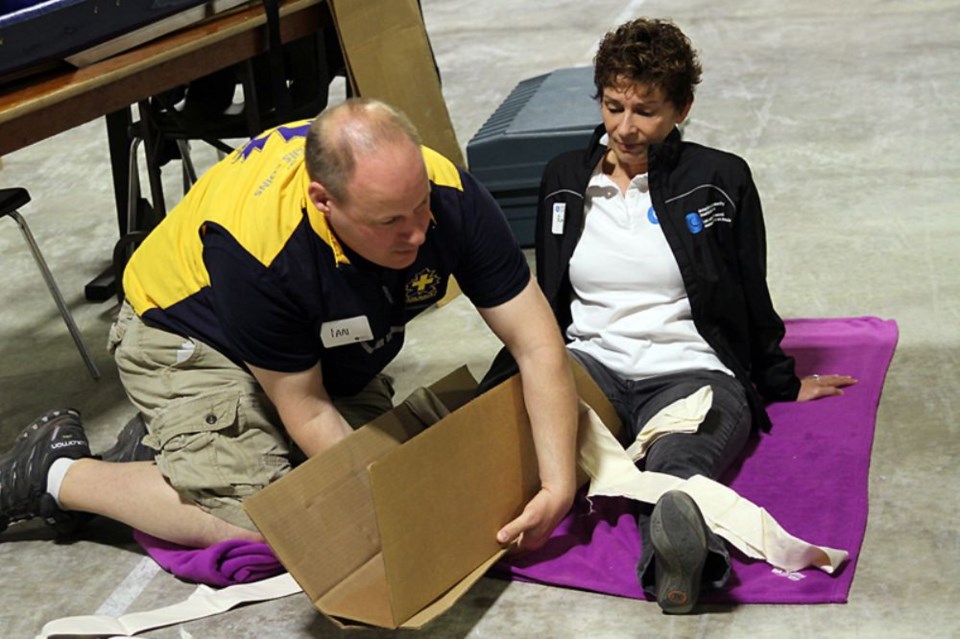Living on a dairy farm well outside the city limits, Christina Mol says it pays to be ready for anything,
When the power goes out or an ice storm hits, having extra supplies on hand can be a lifesaver, especially if travelling into town isn’t an option.
Mol said she garnered plenty of ideas and inspiration on Thursday at the Rural Health Fair at the Stanley Arena, where this year’s theme is emergency preparedness.
The timing was perfect, she added.
“With the fire that just happened this week, I was thinking yeah, it’s a good idea to get out and see what’s available for our area and just make connections with people,” Mol said.
She readily admitted she and her family do not have an emergency kit at home, but It’s something she planned to rectify in a hurry.
“We live on a dairy farm and if the power goes out, we’re kind of stuck,” she said. “So you think about should we get a generator, should we get this kit in place? If we have a bad ice storm, we’re half an hour from town and from the closest hospital.
“So we should have a good first-aid kit on hand and we should have a good supply of water in case the water pumps break down.”
Like Mol, Kakbeka Falls’ Hank Vanveller doesn’t have an emergency kit in his house.
But he’s always willing to learn and said preaching emergency preparedness is a great reminder to people in rural areas.
“There are a lot of people who are not prepared and they like to have the information,” Vanveller said.
Visitors to the fair, which runs until 7 p.m. on Thursday, were encouraged to grab a checklist and make their way around to the annual event’s 50 or so vendors, many of whom were offering up items to help stock an emergency-kit.
Anita Jean, the manager of health and social services at the Nor’West Community Health Centre, said the idea of tying the fair to emergency preparedness week was a partnership that made sense.
Not only does the public get to learn about a variety of services available in the rural region, they also learn about staying safe in the event of a disaster.
“You start picking things up as you go from booth to booth,” she said. “Then you go home, you add water, you add some dry food, you add your clothes and you have the basics of a good emergency preparedness kit.”
According to the government of Canada, a basic emergency kit should include:
- Two litres of water per person, per day
- Canned food, energy bars and dried food
- A manual can-opener
- Flashlight and batteries
- A first-aid kit
- Prescription medicines
- Infant formula
- Extra keys
- Cash – including smaller bills and change for payphones
- An emergency plan
- Other items could include candle and either matches or a lighter
- Additional clothing
- A sleeping bag or warm blanket
- Toiletries
- Toilet paper
- Basic tools
- Whistle
